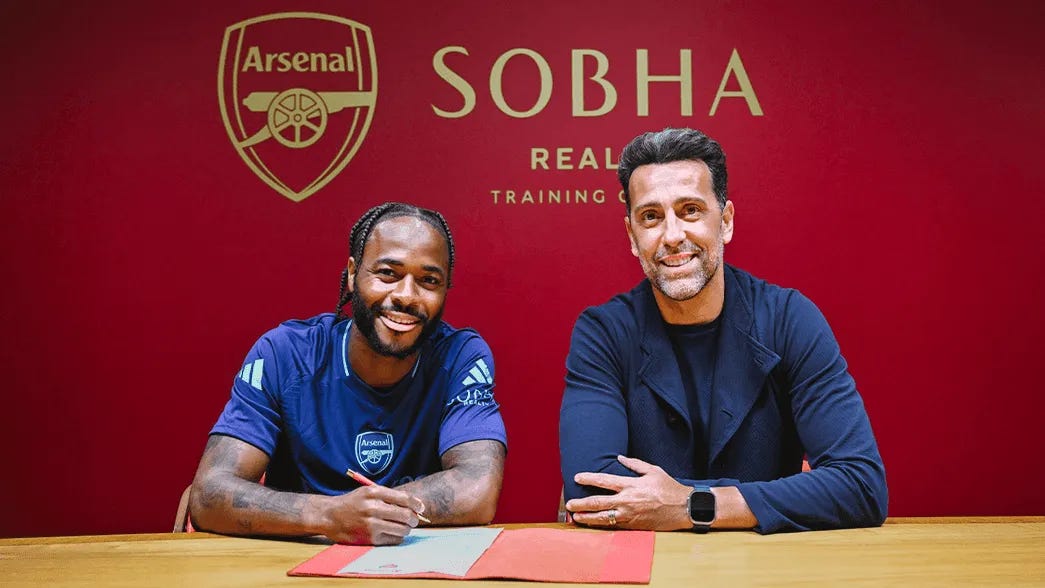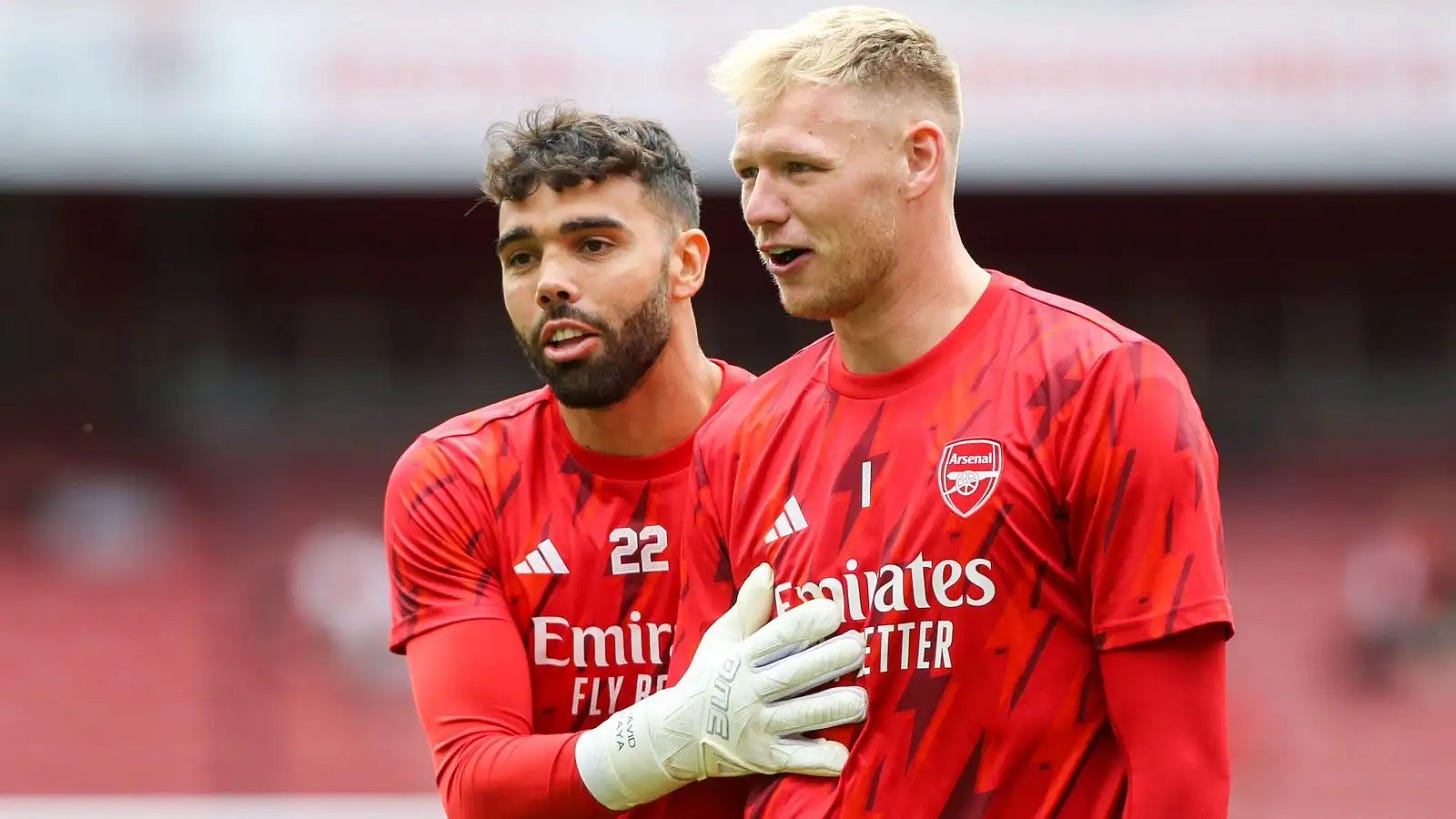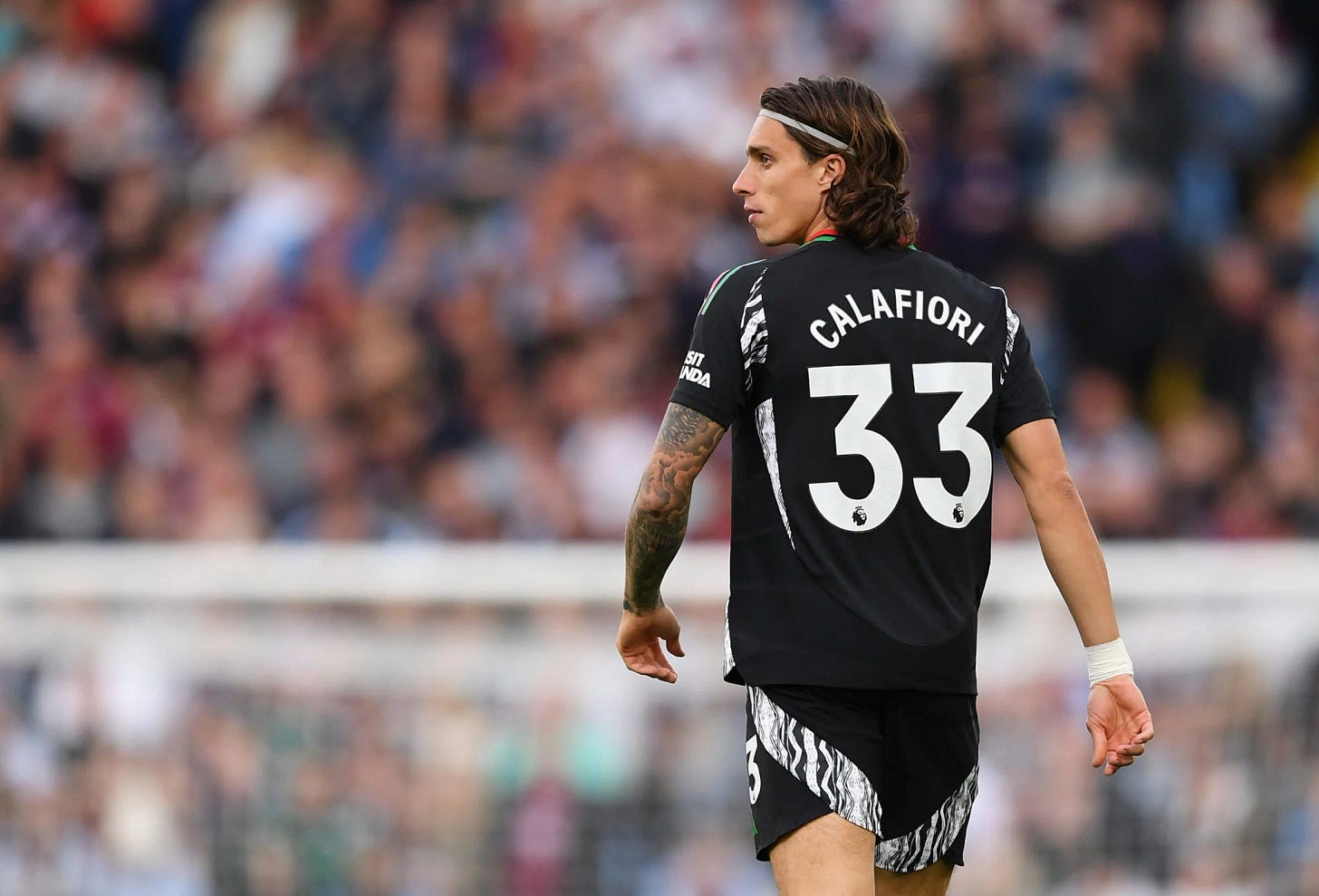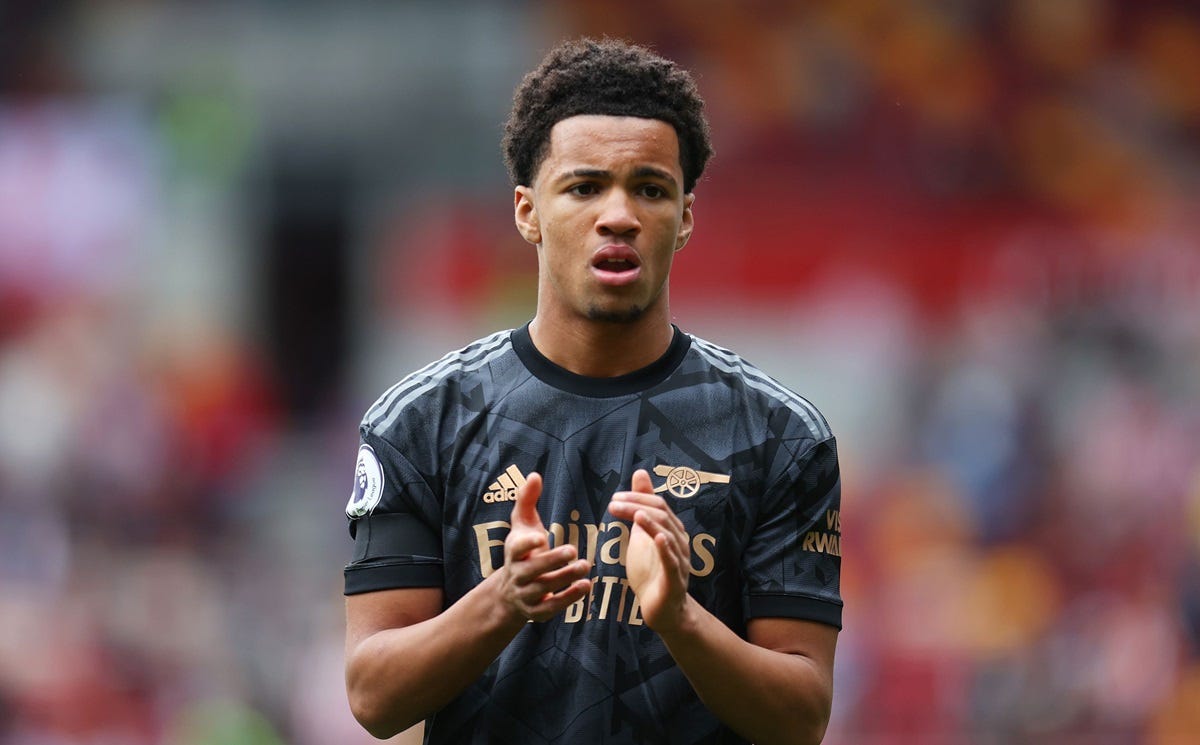No homegrown issues for Arsenal despite departures
The 2024 summer transfer window has slammed shut and Arsenal now have their squad for the first few months of the 2024/25 season. The final day of trading was an atypically busy one for the Gunners as the late arrivals of Norberto Neto and Raheem Sterling were announced while Reiss Nelson, Aaron Ramsdale, and Eddie Nketiah headed off to other clubs within the Premier League.
Lots of talk will be made about how Mikel Arteta’s squad has been shaped and if it has enough depth and quality to compete across four competitions this season, but this article will have a specific focus on the club’s homegrown quotas for both the Premier League and Champions League.
What are the rules regarding player registration?
Arsenal will be required to submit squad lists for both their domestic and European campaigns and while the rules are similar in many ways, there are some key differences. First, lets take a look at the Premier League.
England’s top domestic league requires all 20 competing teams to submit a squad list of no more than 25 players. A maximum of 17 of those spaces are allocated to players not considered to be “Home-Grown”. A Home-Grown player is defined as such by the Premier League:
A "Home-Grown Player" means a player who, irrespective of nationality or age, has been registered with any club affiliated to The Football Association or the Football Association of Wales for a period, continuous or not, of three entire seasons, or 36 months, before his 21st birthday (or the end of the season during which he turns 21).
Clubs are not obligated to fill any quota but must adhere to these upper limits.
The Premier League also allows for players categorised as U21 players—for the 2024/25 season, these are players born on or after January 1st, 2003—to play matches without being included in the 25-man squad list. This applies to all players deemed to be U21 regardless of whether they are Home-Grown or not.
In the Champions League, clubs are required to submit two lists to UEFA—List A and List B.
List A is much like the squad list submitted to the Premier League in that it has an upper limit of 25 players and reserves eight of these spaces for homegrown talents, labelled as “locally-trained players” by UEFA. However, unlike the Premier League, there is a distinction between locally-trained players and “association-trained players”. The differences are as follows:
A "club-trained player" is a player who, between the ages of 15 and 21, and irrespective of the player's nationality and age, has been registered with the player's current club for a period, continuous or not, of three entire seasons or of 36 months.
An "association-trained player" is a player who, between the ages of 15 and 21, and irrespective of the player's nationality and age, has been registered with a club or with other clubs affiliated to the same association as that of the player's current club for a period, continuous or not, of three entire seasons or of 36 months.
In short, a player who has spent three or more years with the club between the ages of 15-21 is deemed club-trained, and a player who spent three or more years with another club from the same association is categorised as association-trained.
Of the eight locally-trained spots in List A a minimum of four must be given to club-trained players, with UEFA putting a greater emphasis on clubs giving talent from their own academies a chance rather than just encouraging them to buy players from their own association.
The aforementioned List B does not have a limit and can contain players born on or after January 1st, 2003. The key difference with the Premier League’s rules on U21 players is UEFA states that List B can only contain players who, since their 15th birthday, have played for the club for two uninterrupted years (or three consecutive years with one allowable loan spell to a club in the same association).
That’s the key points, so let’s move on.
What is Arsenal’s standing in terms of homegrown talent?
The departures of Nelson, Ramsdale, and Nketiah on deadline day, as well as the prior sale of Emile Smith Rowe to Fulham, means Arsenal have lost a considerable number of players this summer who helped fill the club’s homegrown quotas both domestically and in Europe. Three of the four, excluding Ramsdale, also came up through the club’s Hale End academy and thus were deemed club-trained for UEFA competitions.
We’ll consider first the “Home-Grown” players Arsenal will be registering for the Premier League.
David Raya
Benjamin White
William Saliba
Declan Rice
Bukayo Saka
Gabriel Martinelli
Raheem Sterling
It’s important to clarify that Home-Grown does not equal “English”, with Raya (Spain), Saliba (France), and Martinelli (Brazil) all represented here. The latter two both signed for Arsenal at 18 and spent enough time registered with the club before they turned 21 to be deemed Home-Grown, while Raya moved to England at a young age to sign for Blackburn Rovers before progressing through their youth academy.
This distinction means Raya is considered association-trained by UEFA while Saliba and Martinelli are club-trained. Bukayo Saka is the sole other representative of the latter group while White, Rice, and new man Sterling are the three other association-trained players who will be registered. In short, if Arsenal hit their limit in terms of non-homegrown talents over the age of 21, the four association-trained spots are taken (Raya, White, Rice, Sterling) and the only space remaining would be for a club-trained player as Saliba, Saka, and Martinelli take up three of those four spaces. This spot could be reserved for an academy talent when they come of age, or for a former academy graduate who spent enough time with Arsenal before turning 21 such as Bayern Munich’s Serge Gnabry, who joined Arsenal in 2011 at the age of 16.
How many players do Arsenal have who are not homegrown?
While many homegrown talents departed the club this summer and fetched much of the club’s transfer income, bit-part players such as Mohamed Elneny and Cédric Soares left upon the expiry of their contracts to help free up some space for non-homegrown talents. Fábio Vieira returned to FC Porto for the season and the likes of Albert Sambi Lokonga and Nuno Tavares went out on loan again.
The signings of Riccardo Calafiori, Mikel Merino, and Norberto Neto to the first-team squad kept the number of players considered not to be homegrown at a steady level. Here’s the list of first-team players who are in this category:
Norberto Neto
Jurriën Timber
Takehiro Tomiyasu
Gabriel Magalhães
Riccardo Calafiori
Jakub Kiwior
Oleksandr Zinchenko
Kieran Tierney
Thomas Partey
Jorginho
Mikel Merino
Martin Ødegaard
Kai Havertz
Gabriel Jesus
Leandro Trossard
Arsenal go into the 2024/25 season two first-team players under the 17-man limit for players who aren’t homegrown, which demonstrates how much leaner the squad has gotten in recent years. It’s a far cry from the days of the club controversially leaving out Sokratis and Mesut Özil due to a bloated and uneven squad.
What about fringe players and youth team talents?
I included Kieran Tierney in the list above even though the Scotsman is perhaps the last remaining player in the first-team squad who the club would ideally like to have moved on this summer, with his injury suffered at EURO 2024 clearly having an impact on any potential suitors’ interest in him. While it would be a surprise to see Tierney play many meaningful minutes this season the space afforded to Arsenal in their squad will likely seem him registered in both competitions.
One of the two remaining spots will likely be taken by Omar Rekik, with the 22-year-old Tunisia international likely set to benefit from Arsenal’s thinned-down squad even if he is highly unlikely to play. Tommy Setford, the club’s new academy goalkeeper, does not need to be registered for the Premier League at 18 years of age but having only joined from Ajax this summer, he would not be eligible for List B in the Champions League. This is a reverse example of a non-English player being considered Home-Grown due to Setford’s youth career being spent in the Netherlands, and his admission into the European squad would be dependent on him taking up a spot on List A for non-Home-Grown players.
Ethan Nwaneri and Miles Lewis-Skelly, the two current starlets of Hale End who are set to get some meaningful game-time with the first-team this season, can be added to List B thanks to their age and their time at Arsenal during their earlier teenage years. The club will be hoping that both players continue their development and eventually become established members of the squad for many reasons, but it would certainly help insulate Arsenal from having a homegrown issue down the years to come.
So, in summary, here’s the likely 24-man Arsenal squad that we’ll see in the Champions League this season—note that Setford will not need to be registered to play domestic football so expect the Premier League squad to be a man lighter. Arsenal will likely not be able to register a full 25-man squad in either competition due to them simply not needing to; the last remaining spot for List A in the Champions League would need to be both club-trained and born before January 1st, 2003.
One star denotes a Home-Grown, association-trained talent; two stars are added for Home-Grown players who are also club-trained:
David Raya*
Norberto Neto
Tommy Setford
Benjamin White*
Jurriën Timber
Takehiro Tomiyasu
William Saliba**
Gabriel Magalhães
Omar Rekik
Riccardo Calafiori
Jakub Kiwior
Oleksandr Zinchenko
Kieran Tierney
Declan Rice*
Thomas Partey
Jorginho
Mikel Merino
Martin Ödegaard
Bukayo Saka**
Raheem Sterling*
Gabriel Martinelli**
Kai Havertz
Gabriel Jesus
Leandro Trossard





